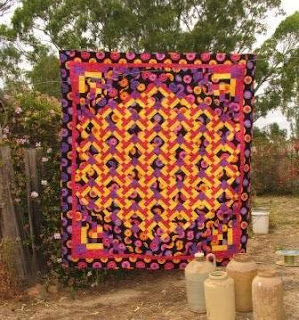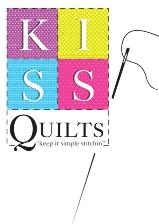Not only should you use the best quality needles to keep your machine in tip top condition, you should use the correct size needle for the project at hand.
Fabric weights vary from very light weight chiffon, fine satin & soft jersey to the thickest denim fabric.
All of these fabrics are able to be sewn on most machines.
The deal is that you use the correct needle for the thickness & type of fabric or application.
Below is the chart to show the most commonly used needles for your Janome machine.
KISS QUILTS
Know Your Needles
USE JANOME BRAND NEEDLES FOR JANOME MACHINES
Needle Chart: Change your needle regularly.
SIZE:
9 very fine fabric only
11 fine fabric / lightweight fabric
Blue Tip /11 sharp point-embroidery- stretch & any fine fabrics
12 medium weight fabric / cotton etc.
14 heavy fabric / drill etc.
Red Tip /14 used for it's sharp point -curtains- embroidery on towels/thicker fabrics & Top
quilting.
16 very thick fabric “Denim needle” is best (see below)
Denim /16 used for it's sharp point - for jeans and any thick denim or densely woven fabric
For Janome Overlockers, please use Janome Ball Point needles.
For any older overlockers; if you are not sure of the type of needle to use - take the manual to the store to check for the correct needle type.
For the older type overlocker they are not always the Janome brand needles.
What size to use:
For most overlockering you should only need size 11 or 12 needles for medium weight fabrics. Most overlockers are not for sewing very thick fabrics.
Size 12 needles are still OK for most fine fabrics – always test on a scrap first to see if it does not damage your fabric.
SKIPPED STITCHES: time to change the needle
The main causes;
Needle too large for fabric used
Needle blunt / damaged or too old
Pulling work through machine- very bad for your machine as well
Some older machines will skip, even with the correct needle
Ran over a pin and damaged the needle
Used needle for the wrong fabric before – “now damaged”
©Gillian Williams 2007
KISS QUILTS
Know Your Needles
For Most Brands
You must use the correct size needle in your machine.
Needle Size Chart: Change your needle regularly.
Microtex 60/8 Microfibre and extra fine fabrics
Microtex 10 & 12 Medium densely woven fabrics
Stretch 75/11 Knitted fabrics, stretch, Lycra, T-shirt fabric etc.
Ball Point 80/12 Other knitted fabrics – (thicker fibered knits)
Universal 70/10 Most fine fabrics
Universal 80/12 Any medium fabrics – cottons etc. piecing a quilt.
Universal 90/14 Heavy weight fabrics
Jeans 80/12 Embroidery / most fabrics (used for the sharp point)
Jeans 90/14 Medium denim – toweling / Embroidery & Top Quilting
Jeans 100/16 Heavy denim fabrics
Jeans 110/18 Extra heavy - thick denim
Jeans needles have a sharp point, which allows greater needle penetration power, when sewing dense or thick fabrics. Also great for embroidery machines.
Skipped stitches: Time to change the needle.
The main causes:
Ø Needle too large for the fabric used
Ø Needle blunt / damaged (too old)
Ø Poor quality needle (cheap)
Ø Pulling the work through the machine- bends or takes the tip off
Ø Some older machines will skip, even with the correct needle
Ø Ran over a pin and damaged the needle – take pins out first.
Ø Used the needle for the wrong fabric before – “damaged”
SCHMETZ makes the best quality machine needles, the scarf of the needle is longer and more pronounced, permitting a preciseness not found in other needles. 99% of all domestic machines of any vintage will take SCHMETZ needles.
Most new overlockers will take the same needles as machines now. Always check your manual for older overlockers. They are sometimes different to machines.
The life of a needle.
Some facts that we must consider are – fabric has changed over the last 30 years. Manufacturers now use metal dyes, polyester threads to make the fabrics and chemicals for pressing permanently.
A very simple garment/project can have a minimum of 40,000 stitches, therefore one garment/project puts a lot of mileage on the needle, one needle should last for two or three garments/projects provided there are no mishaps with the needle.
Feel free to ask any questions on my face book page.
©Gillian Williams 2007


